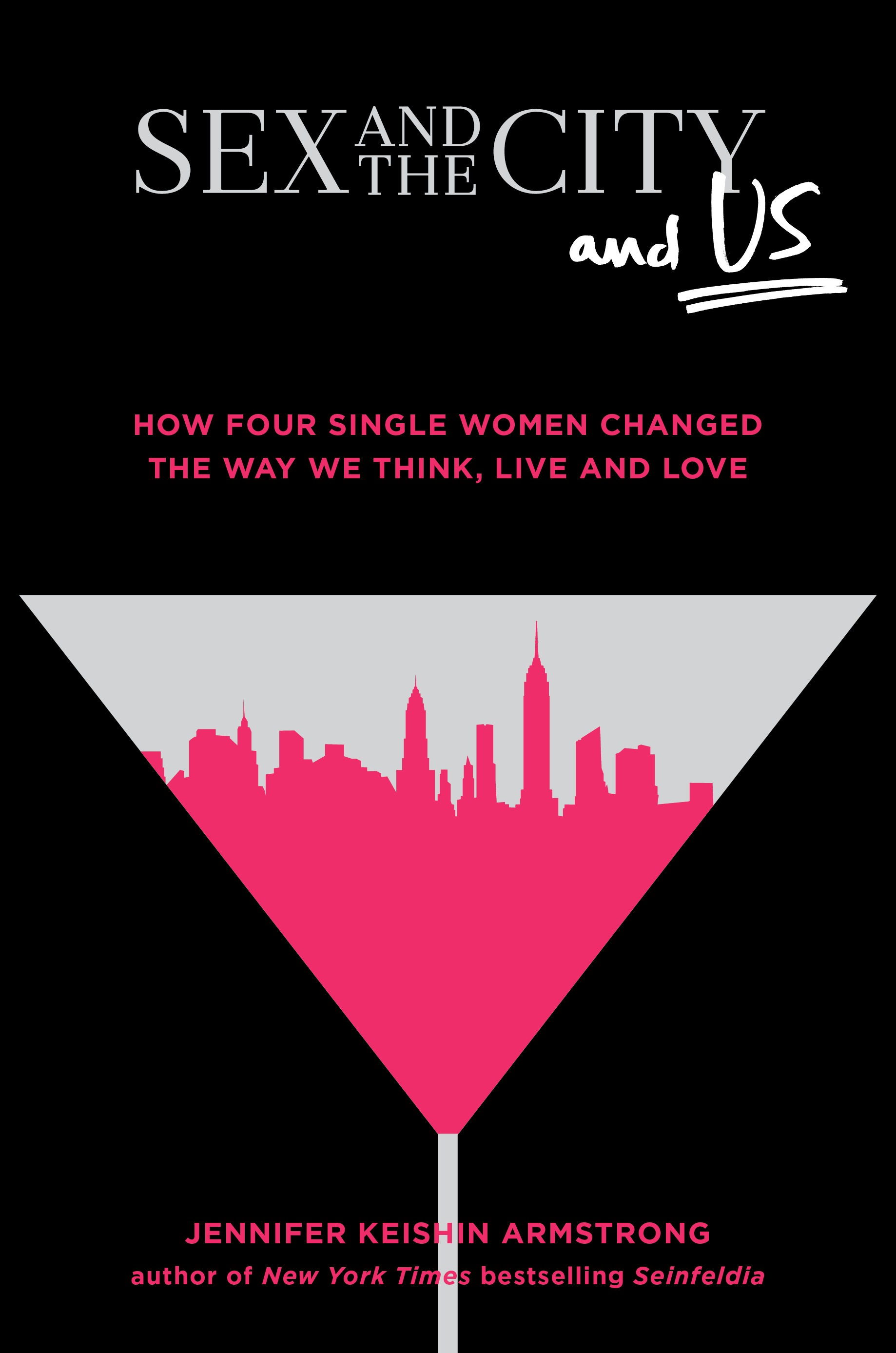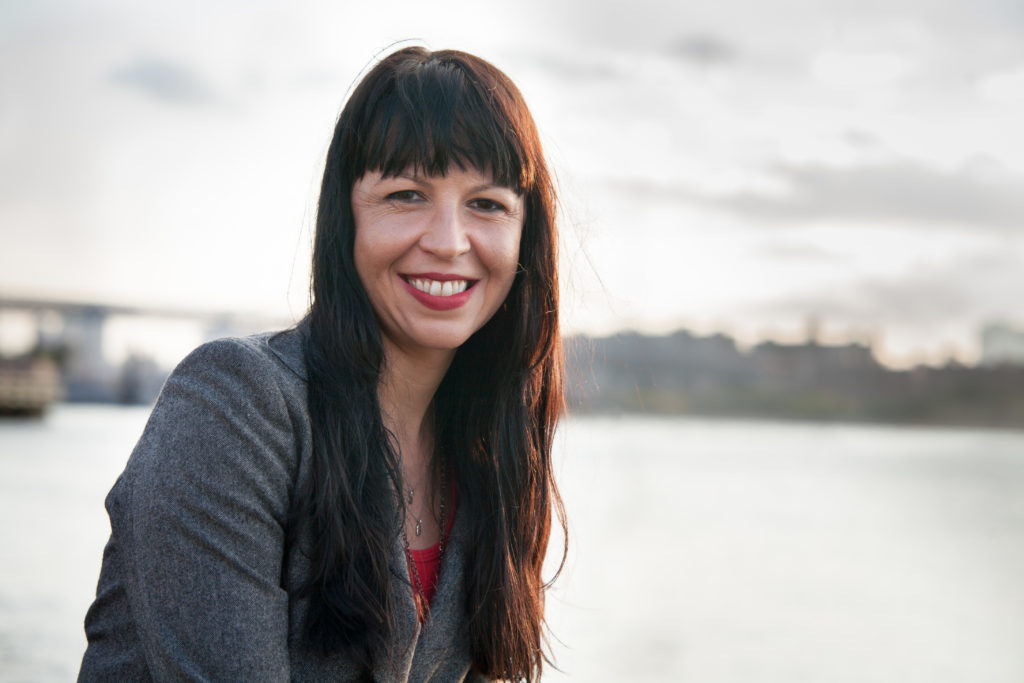Jennifer Keishin Armstong has chronicled the history of TV shows in several books, including “Seinfeldia” and “Mary and Lou and Rhoda and Ted.” It seems almost perfect that for her third title, “Sex and the City and Us,” she decided to delve into the world of the iconic series during the era of #MeToo and #TimesUp, when women are demanding their stories be heard.
“Sex and the City,” which aired from 1998 t0 2004 on HBO, was a phenomenon like no other for women in television. It was bold, ground-breaking, and innovative in its depiction of single women living in New York City and its cast — Sarah Jessica Parker, Cynthia Nixon, Kristin Davis, and Kim Cattrall — was pure gold. The show’s creator, Darren Star, decided early on that TV needed a show about women. But not just any show — a show that would change the way people felt about issues never before discussed on television. Yet it really all started with a sex columnist named Candace Bushnell. It was Bushnell’s 1996 book, “Sex and the City,” that served as the source material for the game-changing series.
To research “Sex and the City and Us,” Keishin Armstrong interviewed Bushnell, Star, and many members of “SATC’s” cast and crew. We chatted with her about the book and her thoughts on the show’s overall significance.
“Sex and the City and Us” is available online and at bookstores everywhere.
W&H: “Sex and the City” is iconic for so many reasons. What was it about the show that drove you to write this book?
JKA: The book’s introduction in this case speaks for itself. I’m always looking for that bigger effect shows have on everyday life. I mean, we love “Game of Thrones,” but no one is changing their lives watching it. At least I don’t think they are! So, “Sex and the City” had a profound effect on people’s lives, big and small, and for me personally, it really did have an inspirational effect.
W&H: You got access to many of the personalities from the show, including Candace Bushnell and Darren Star. How hard, or easy, was it to get them to tell their stories?
JKA: It wasn’t that hard. First of all, I’ve done this a few times and have a track record. I’d also written about the show at Entertainment Weekly and had interviewed some of these people before. I had also talked to some of the writers before. When you’re writing a book, the more people you talk to, the more people come on board.
I was particularly excited about Candace. Weirdly, she’s super famous but her story has not been fully told that much before. I really wanted to know how she came up with the column, and learned that she took this life she had and made it into this space that everyone wanted to read.
Throughout the book, stories from everyone I spoke to echo that. Women involved with the show were kind of demanding that people took the stories they were telling seriously, while coming out on top, but it was always a struggle.
W&H: “Sex and the City” was created by men, run by men, with a writers’ room full of women. What did you learn about that and the women’s experiences in the writers’ room?
JKA: It reminded me of “The Mary Tyler Moore Show” because it was a show created by two men and run by two men who were really focused on making sure they were telling women’s stories correctly.
Once the first season was over, Star really hired all women. There was a stray man in the writers’ room in the first season. Then they had to hire a straight male later, Greg Behrendt, to make sure they were giving the men their say. I don’t even think now we have that many writers’ rooms run by women, even though it was run by two gay men, essentially. Darren even talked about how at the time it was so predominantly male in the industry, and he’s the one who could hire so many women because he had the power. They hired this group of women who really brought their personal stories to the writers’ room. All the stories on the screen were their personal stories, like when Jenny Bicks got cancer and executive producer Michael Patrick King put it in the show.
Their writing process was so different to shows I have written about like about “Seinfeld,” which was very male and competitive. They had morning Host Chats that were like group therapy. They would go over what happened to them the night before, in the van on the way to work, and in the writer’s room. King would specifically assign stories to writers depending on who had the biggest issue. Whoever was living an issue got that script. It was very personal for them.
Since writing the book, I’ve been on a few emails with these women and they still tell each other everything. They fight over stuff. That was part of their process, like whether Carrie should end up with Big or Aidan, and those discussions went on screen.

W&H: The reviews of the show were initially so sexist.
JKA: Yes, a reporter from The Washington Post kept coming back every season, to take more shots, with that very weird vibe of insulting Sarah Jessica Parker’s looks and sexualizing her. He said, “oh, good thing they made the opening credits a wet T-shirt contest.” What kind of person sees that in the opening credits? Yes, Carrie has breasts and there is a puddle, but that’s not it at all.
I felt bad including these reviews because they were so awful, but I wanted people to understand what these women were up against. It was extraordinary. People were very upset at the time.
W&H: The writers even jumped ship to work there. Cindy Chupack left “Everybody Loves Raymond” to join the team. I recently interviewed Nell Scovell, who told me one #MeToo experience after another, but the “SATC” women didn’t seem like they had those experiences?
JKA: I didn’t hear about anything bad on the set, and that must be a result of being on such a female-heavy show. Parker was an executive producer – she really had a say in everything and had a leadership position on that set. Everyone generally had a good experience, despite the clear tension within the cast that we’ve seen blow up recently. Most people who worked on the show said it was like a family to a large extent due to Star and Parker’s credit.
I wrote a piece for Vanity Fair that there’s not an element of #MeToo or [not much of one] in this show. The writers said that women should be free to go out and explore sex but no, they’re not going to tell you how dangerous or scary it can be.
W&H: Did the other actresses have a say in their characters’ development?
JKA: Darren’s thinking going into this and forming the cast was clear to me from the start. I’m sure they would have had a problem if they cast four women who wouldn’t do anything. Yes, all four women seemed very committed to the show, but they wanted to be comfortable and controlled the level of nudity. Kim Cattrall did a lot of the heavy lifting in terms of the sex stuff, but she was open to it. She was willing to explore and was a genius in her role.
W&H: You incorporate history into the book, particularly about feminism and women in general. Was that built into your interviews or was it research?
JKA: It was mostly research on my part. I run a feminist site, I wrote a book on feminism [“Sexy Feminism: A Girl’s Guide to Love, Success, and Style”].
People don’t always understand what a big deal the show was back then – when young women see it now, it feels so retro. But the way women talked openly about sex and their sexual desires was huge and watching women’s perspectives all the time was mind-blowing. Now we have a bunch of shows that came after that do this stuff because this show did it.
There were definitely episodes that feel throw-backy to 2018 disapproving eyes and ears like the bisexual episode and where Samantha dates a black man. But so much of the other stuff that they did at the time was ground-breaking. We had not seen women in the back of a cab discussing anal sex before “Sex and the City.” It was a really big deal and the only way to understand that is to understand that it was coming out of third wave, sex positive feminism.
W&H: It also changed the perception of single women.
JKA: Absolutely. The show almost instantly changed the perception of single women. Before that, the best you could do was be a Cathy comic strip, talking about brownies, or even worse, be a cat lady or spinster. [“Sex and the City”] very quickly changed this perspective. Even married women across the country wanted to emulate these women.
We can discuss the good and bad of this incredibly glamorous lifestyle they had, but [the show] made women look good.
W&H: What shows do you think are comparable today?
JKA: Definitely “Younger,” “The Bold Type,” “Insecure,” even “Broad City” – not just in terms of NYC but in terms of female friendship and talking about sex.
It’s interesting because everyone was always gunning for “SATC” because it was the only depiction we had of single women over 30. People were really always nitpicking at it because there was only one depiction on television. Now we have all these different options, so there isn’t as much pressure for a show to deliver. There has been progress. We have a lot more voices out there.
W&H: What do you think of Cynthia Nixon running for office?
JKA: It is the “SATC” finale we all deserved.
W&H: What do you want your readers to take away from your book?
JKA: The main thing is how at every turn, women had to believe in the show. No one wanted to take it seriously. It was fun, it was about women, but people just dismissed it.







